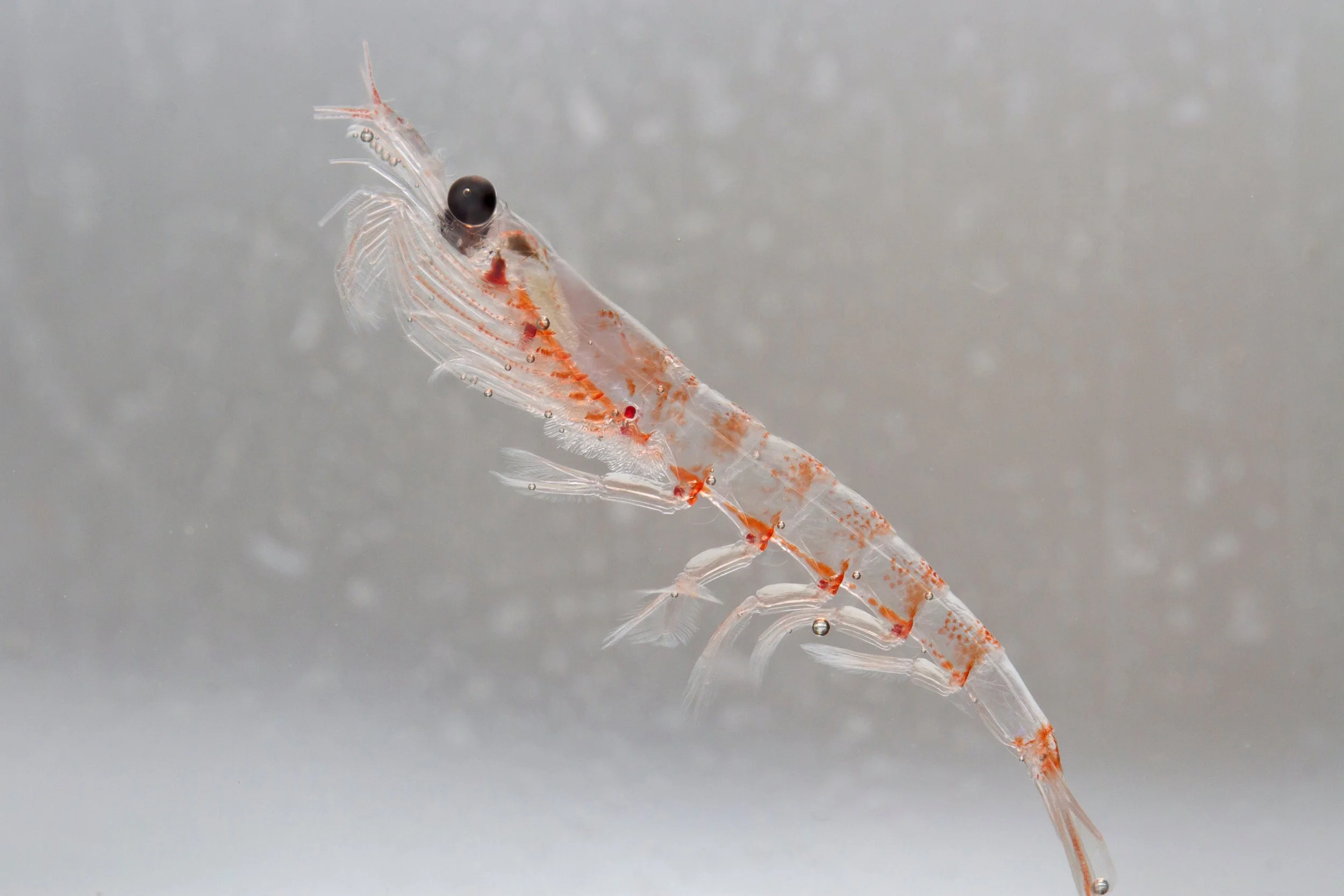The tiny Antarctic krill (Euphausia superba), a cornerstone species driving Antarctic food webs and new genomic discoveries.
How Big Is Too Big? The Mega-Genome of Tiny Krill
The Fish10K consortium, best known for sequencing the genomes of marine and freshwater fishes, has reached a remarkable milestone: the first chromosome-level genome of the Antarctic krill. Individually tiny but collectively immense, Antarctic krill (Euphausia superba) rank among the most abundant animals on the planet, with an estimated 300–500 million tons of biomass—the largest of any wild species (Shao et al., 2023). They form the base of the Southern Ocean food web, sustaining everything from seabirds to the world’s largest predator, the blue whale.
Yet this tiny crustacean carries an astonishing genetic secret: one of the largest genomes of any known animal. To piece it together, Fish10K scientists drew on every sequencing and assembly technology at their disposal. The effort was enormous—six researchers spent more than 13,000 hours on the project. As lead scientist, Minwen Zhang explained, “by comparison, assembling this genome was about 100 times more time-consuming than working with a 1 Gb fish genome.”
Why did it take so much work to decode the DNA of such a small creature? The answer lies in both the krill’s biology and its environment. These animals have evolved to survive under extreme swings in light, temperature, and sea ice, and their genome carries the signatures of these adaptations. On top of that, the Antarctic krill genome is highly repetitive, a feature that made the assembly process especially difficult. Unlocking its secrets will help researchers better understand how life thrives in one of Earth’s most demanding environments.
Several Antarctic marine species feed heavily on Antarctic krill, including Gentoo penguins (Pygoscelis antarctica) and the massive blue whale.



